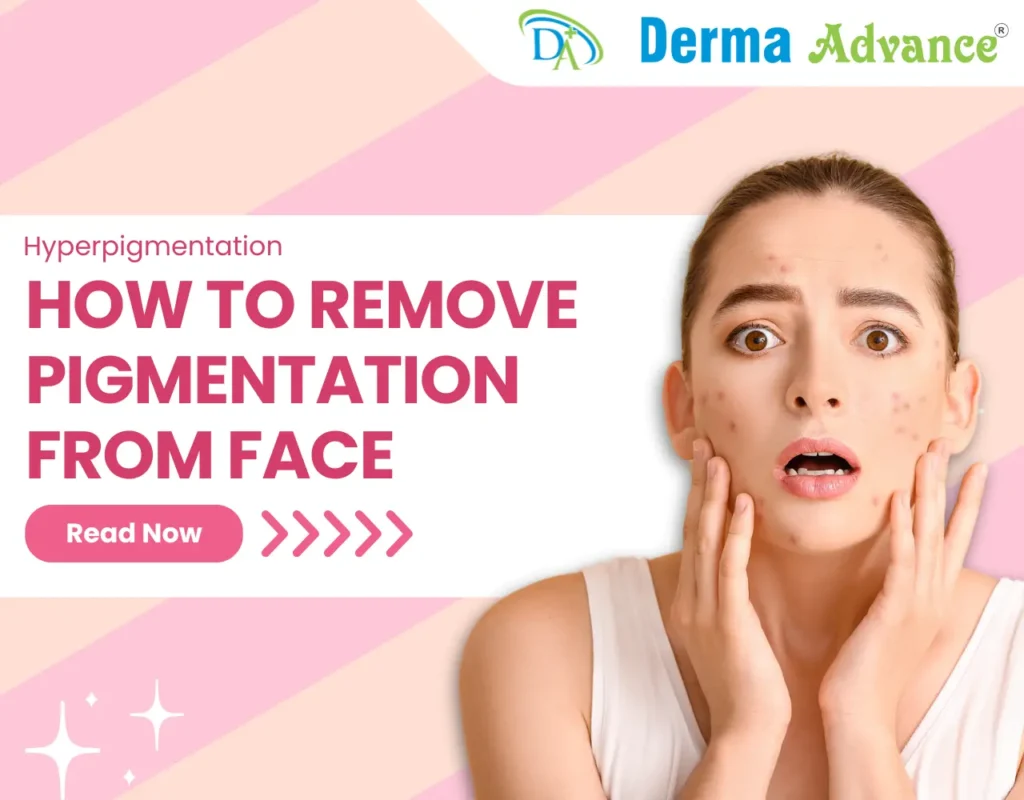Introduction
Hyperpigmentation is a common skin condition that causes dark patches or spots to form on the face. These dark spots can appear for several reasons, including sun exposure, hormonal changes, and skin injuries. Understanding how to remove hyperpigmentation from the face is essential because it can have both emotional and physical effects.
Many people with hyperpigmentation feel self-conscious about their skin. Dark spots can affect a person’s self-esteem and confidence, making them feel less comfortable in social situations. This emotional impact is significant; when people are unhappy with their appearance, it can lead to anxiety and stress.
However, learning about how to remove hyperpigmentation from face is the first step toward treatment. By understanding the causes and how to remove hyperpigmentation from the face, individuals can take control of their skin health. There are various methods available, from topical treatments to professional procedures, which can effectively help reduce the appearance of dark spots on the face.
Recognizing the impact of hyperpigmentation is important, and taking action to remove hyperpigmentation from the face can lead to improved confidence and a better sense of self. With the right information and resources, it is possible to achieve clearer, more even-toned skin.
Table of Contents
Understanding Hyperpigmentation on the Face
Definition of Hyperpigmentation

Hyperpigmentation is a skin condition characterized by the appearance of dark patches or spots on the skin, particularly on the face. This condition occurs due to an excess production of melanin, the pigment that gives skin its color. When certain areas of the skin produce more melanin than others, it results in uneven skin tone and dark spots, which can be frustrating for those affected.
Common Forms
Melasma
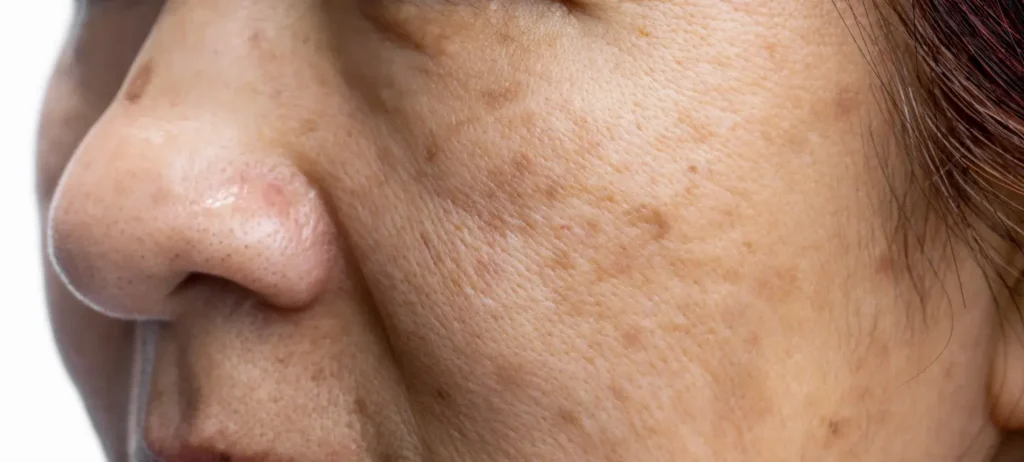
Melasma often appears as brown or grayish-brown patches on the face. This form of hyperpigmentation is commonly triggered by hormonal changes, such as those experienced during pregnancy or when using birth control pills. Melasma usually affects women more than men and can be particularly challenging to treat, as it tends to recur.
Post-Inflammatory Hyperpigmentation (PIH)
Post-inflammatory hyperpigmentation (PIH) occurs as a response to skin injuries, such as acne, cuts, or burns. After the skin heals from an injury, darkened areas may remain, resulting in an uneven skin tone on the face. This type of hyperpigmentation is more common in individuals with darker skin tones and can be triggered by various skin traumas.
Sunspots (Lentigines)
Sunspots, also known as lentigines, develop from prolonged sun exposure. These spots typically appear on areas of the face that are frequently exposed to sunlight, such as the cheeks, nose, and forehead. Sunspots are more common in older adults and can be a sign of sun damage. Protecting the skin from UV rays is crucial to prevent these spots from forming.
Common Causes of Hyperpigmentation on the Face
Sun Exposure

One of the most significant causes of hyperpigmentation on the face is sun exposure. UV rays from the sun stimulate the production of melanin, which can lead to the development of dark spots on the skin. These spots often appear on areas of the face that are most exposed to sunlight, such as the cheeks, nose, and forehead. To prevent new spots from forming, it is crucial to practice sun protection. This includes wearing sunscreen with a high SPF, seeking shade, and wearing protective clothing. By taking these steps, you can help remove hyperpigmentation from your face and maintain a more even skin tone.
Hormonal Changes
Hormonal changes can also play a significant role in the occurrence of hyperpigmentation on the face. Fluctuations in hormones, particularly during events like pregnancy, menopause, or the use of hormonal contraceptives, can exacerbate conditions such as melasma. This type of hyperpigmentation typically manifests as brown or grayish patches on the face. Understanding how hormonal changes contribute to dark spots is essential for addressing and managing hyperpigmentation. If you’re looking to remove hyperpigmentation from your face, it may be beneficial to consult with a healthcare provider for personalized advice.
Inflammation and Skin Injuries
Inflammation and skin injuries are common triggers for post-inflammatory hyperpigmentation (PIH) on the face. Acne breakouts, cuts, and burns can all lead to darkened areas after the skin has healed. This means that effective skincare is crucial in preventing PIH and removing hyperpigmentation from the face. Properly caring for your skin after an injury or breakout can help minimize the risk of dark spots forming. Consider using gentle products and treatments aimed at healing the skin to reduce the chance of pigmentation issues.
Topical Treatments for Hyperpigmentation on the Face
Hydroquinone
How It Works
Hydroquinone is a popular topical treatment that effectively lightens dark spots on the face by inhibiting melanin production. Melanin is the pigment responsible for the color of our skin, and when it is produced in excess, it can lead to hyperpigmentation. By reducing melanin synthesis, hydroquinone can help you remove hyperpigmentation from the face, resulting in a more even skin tone.
Usage Recommendations and Side Effects
While hydroquinone can be highly effective, it is recommended for short-term use, typically up to 3-4 months. Prolonged use may lead to side effects such as skin irritation or dermatitis, which can be particularly concerning for facial skin. Always consult a dermatologist before starting treatment, especially if you have sensitive skin or are prone to reactions.
Retinoids
Promoting Cell Turnover
Retinoids are derivatives of vitamin A and are known for their ability to promote cell turnover, which helps fade pigmentation. They are especially beneficial for those dealing with acne-related hyperpigmentation, as they can address both the existing dark spots and the underlying acne issues. By increasing the rate of skin cell renewal, retinoids work to gradually remove hyperpigmentation from the face.
Balancing Effectiveness with Irritation Risks
While retinoids are powerful, they can also cause irritation, particularly for sensitive facial skin. It’s important to start with a lower concentration and gradually increase it as your skin builds tolerance. This approach can help minimize side effects such as redness, dryness, or peeling, allowing you to benefit from the treatment without overwhelming your skin.
Vitamin C
Antioxidant Properties
Vitamin C is a potent antioxidant that brightens the skin and helps reduce dark spots. Its ability to neutralize free radicals can protect the skin from further damage while promoting a more radiant complexion. Various forms of Vitamin C serums are available, each with differing efficacy levels for facial application. For optimal results, look for serums containing L-ascorbic acid, as this is the most researched and effective form of Vitamin C.
Choosing Stable Vitamin C Formulations
When selecting a Vitamin C product, it’s essential to choose stable formulations that maintain potency over time. Products packaged in opaque containers and with air-tight seals are less likely to degrade and lose effectiveness. This stability is crucial for achieving the best results in your journey to remove hyperpigmentation from the face.
Azelaic Acid
Anti-Inflammatory and Depigmenting Effects
Azelaic acid is a versatile treatment known for its anti-inflammatory and depigmenting properties. It is particularly effective for those experiencing both acne and hyperpigmentation, making it a suitable option for facial treatments. Azelaic acid works by inhibiting melanin production and promoting skin cell turnover, which can help even out skin tone and reduce the appearance of dark spots.
Kojic Acid
Natural Skin-Brightening Abilities
Kojic acid is derived from fungi and is widely recognized for its natural skin-brightening abilities. It effectively lightens dark spots on the face by inhibiting melanin production. Kojic acid is often found in serums and creams specifically formulated to target hyperpigmentation, making it a great option if you’re looking to remove hyperpigmentation from the face.
Niacinamide (Vitamin B3)
Prevents Melanin Transfer
Niacinamide, also known as Vitamin B3, is another effective treatment for hyperpigmentation. It works by preventing the transfer of melanin to the skin surface, helping to reduce dark spots and improve overall skin texture. Incorporating niacinamide into your daily facial care routine can be a gentle yet effective way to combat hyperpigmentation while supporting skin health.
Professional Treatments for Facial Hyperpigmentation
Chemical Peels
Overview of Peels
Chemical peels are effective treatments for facial hyperpigmentation that involve applying a solution to exfoliate the top layers of skin. Common types of chemical peels include glycolic acid, lactic acid, and TCA (trichloroacetic acid) peels. Glycolic acid peels are derived from sugar cane and are known for their ability to penetrate the skin deeply, helping to reduce the appearance of dark spots and improve skin texture. Lactic acid peels, on the other hand, are milder and derived from milk, making them suitable for sensitive skin. TCA peels are stronger and are often used for more severe pigmentation issues, providing more dramatic results.
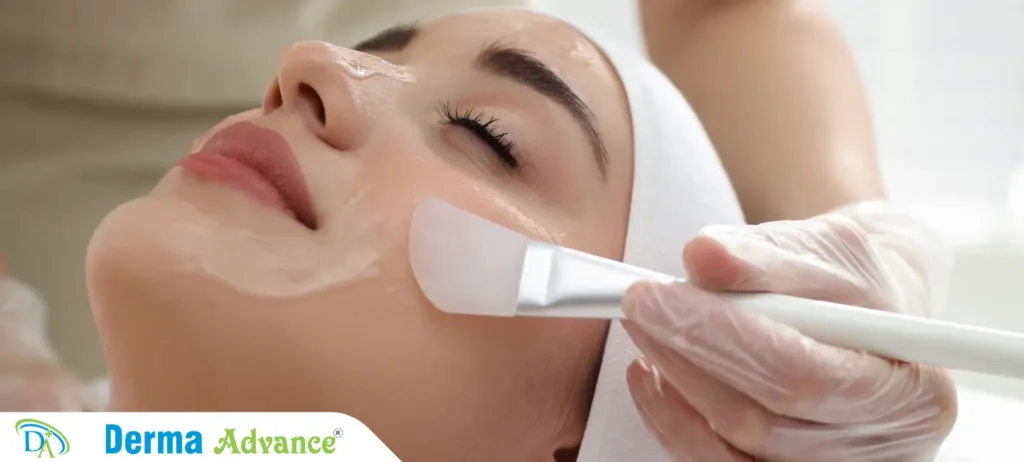
Downtime, Aftercare, and Results
After undergoing a chemical peel, recovery time can vary based on the strength of the peel. Generally, lighter peels may require minimal downtime, while deeper peels can involve a few days of redness, peeling, and sensitivity. Aftercare is crucial for optimal results. Patients are advised to keep the skin moisturized, avoid direct sunlight, and use gentle cleansers. It’s essential to follow the dermatologist’s specific aftercare instructions to minimize complications and enhance healing. Results typically appear within a few weeks to a few months, as the skin regenerates and pigmentation fades.
Laser Treatments
Types of Laser Treatments
Laser treatments are another powerful option for treating facial hyperpigmentation. Types of lasers include fractional lasers, Intense Pulsed Light (IPL), and Q-switched lasers. Fractional lasers target specific areas of pigmentation while preserving surrounding skin, promoting faster healing. IPL uses light energy to target melanin in the skin, effectively breaking up dark spots. Q-switched lasers are designed to target deeper pigmentation and are suitable for various skin types. These treatments can provide significant improvement in skin tone and texture, helping to remove hyperpigmentation from the face.
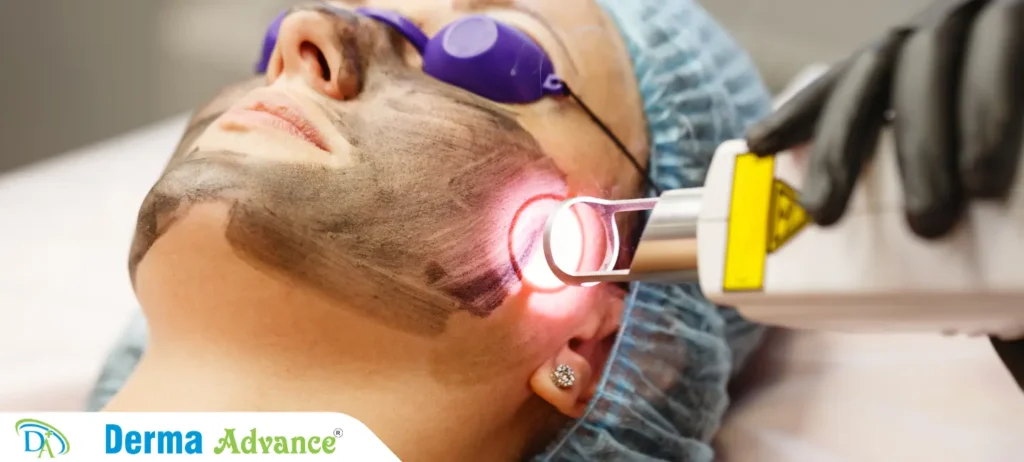
Safety Considerations
Before undergoing laser treatments, a professional assessment is crucial, especially for individuals with different skin tones. Certain lasers may pose a higher risk of hyperpigmentation in darker skin types. A qualified dermatologist will evaluate your skin condition and history to recommend the most appropriate treatment while ensuring safety. This step helps prevent complications and ensures the best possible outcomes for facial hyperpigmentation treatments.
Microneedling with PRP
Collagen Production
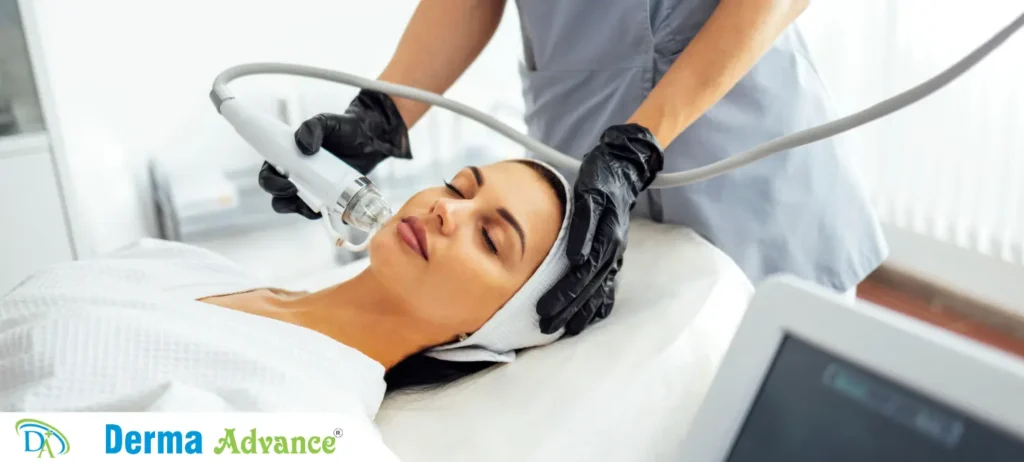
Microneedling is a minimally invasive treatment that involves using fine needles to create tiny punctures in the skin. This process stimulates collagen production, which helps repair the skin and evens out skin tone. When combined with PRP (platelet-rich plasma), the treatment becomes even more effective for facial hyperpigmentation. PRP contains growth factors that promote healing and enhance the skin’s rejuvenation process. This treatment is particularly beneficial for individuals with stubborn dark spots resulting from acne scars or other skin injuries.
Microdermabrasion
Gently Exfoliating
Microdermabrasion is a gentle exfoliating treatment that uses fine crystals or a diamond-tipped wand to remove the outermost layer of dead skin cells. This procedure is effective for treating surface-level pigmentation on the face, making it suitable for sensitive skin. The gentle nature of microdermabrasion allows for minimal downtime, and patients can typically resume their normal activities shortly after treatment. Regular sessions can lead to improved skin texture and a more even complexion, helping to remove hyperpigmentation from the face over time.
Natural Remedies for Hyperpigmentation on the Face
Aloe Vera
Healing and Skin-Lightening Benefits
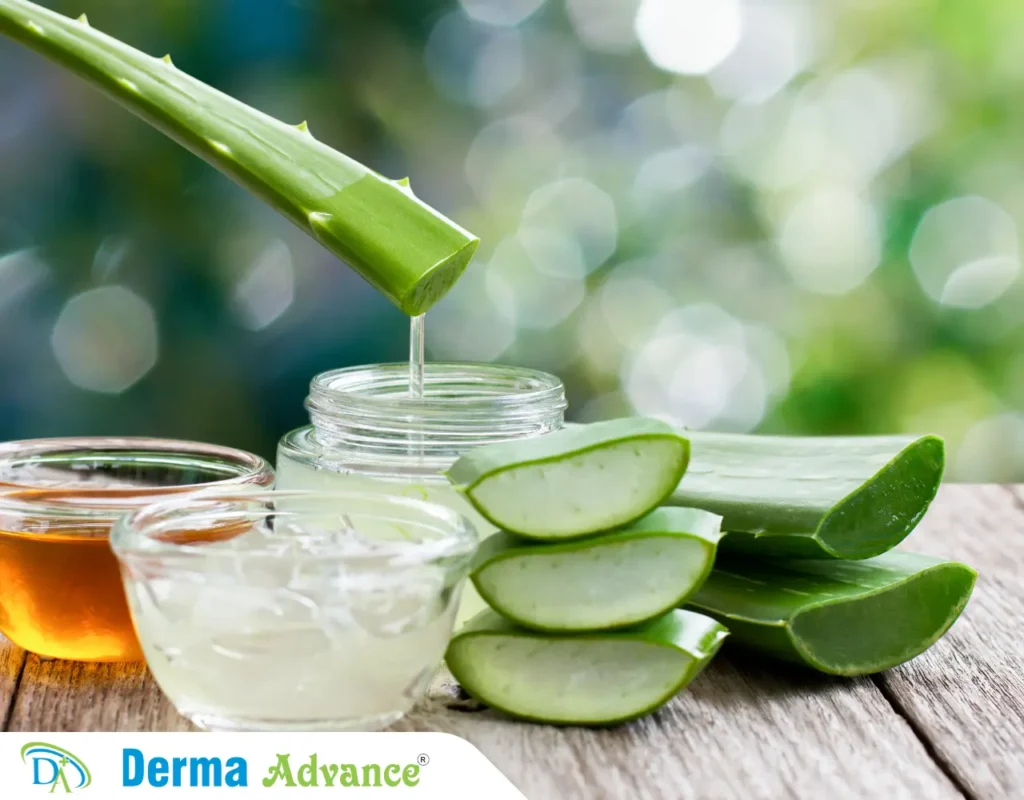
Aloe vera is a powerful natural remedy for hyperpigmentation on the face. The gel extracted from the aloe vera plant contains aloin, which has been shown to inhibit melanin production. Applying aloe vera gel directly to the affected areas can soothe the skin and help lighten dark spots over time. Its anti-inflammatory properties also aid in calming irritated skin, making it an excellent choice for those dealing with post-inflammatory hyperpigmentation (PIH) caused by acne or other skin injuries. Regular application can lead to a more even skin tone and improved overall skin health.
To learn more about aloe vera, visit Healthline.
Turmeric
Anti-Inflammatory Properties
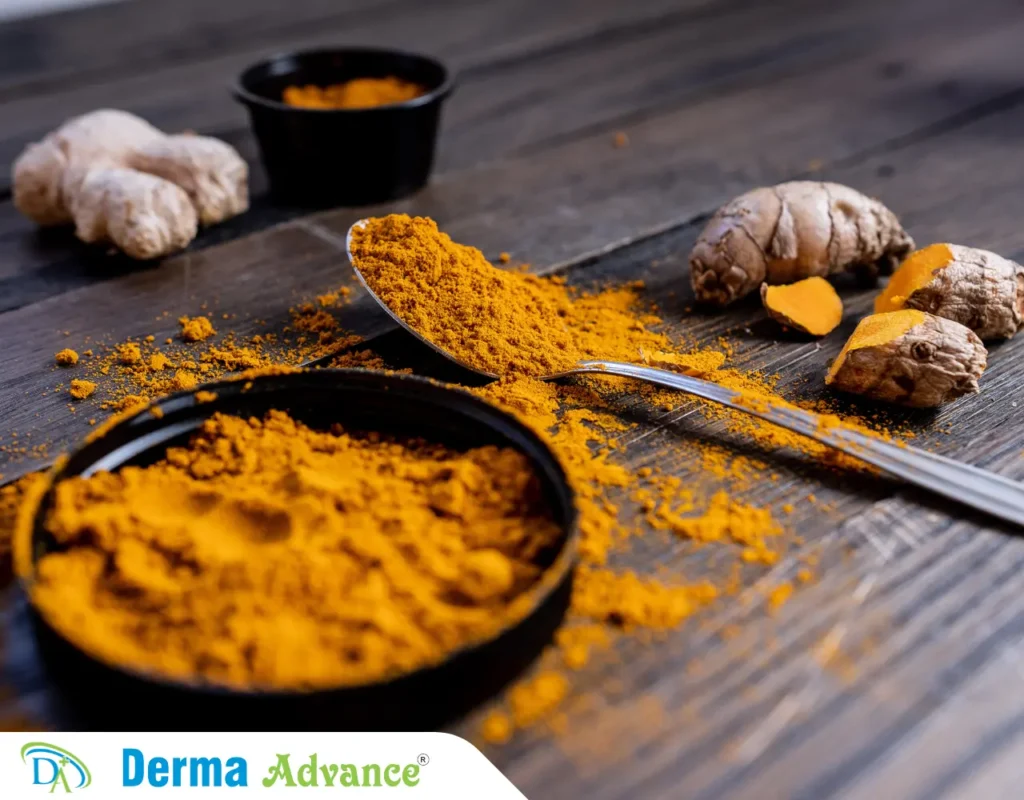
Turmeric is another effective natural remedy for hyperpigmentation on the face. The active ingredient in turmeric, curcumin, has potent anti-inflammatory and antioxidant properties. Masks made from turmeric can help lighten dark spots while providing soothing effects on the skin. To create a simple turmeric mask, mix turmeric powder with honey or yogurt and apply it to your face. Leave it on for about 20 minutes before rinsing off. This not only helps in reducing pigmentation but also nourishes the skin, making it glow. Regular use can lead to noticeable improvements in hyperpigmentation.
Green Tea Extract
Antioxidants to Protect Skin
Green tea extract is rich in antioxidants, which can help protect the face from further damage and reduce the risk of pigmentation. The polyphenols in green tea, particularly EGCG (epigallocatechin gallate), have been shown to inhibit melanin production, making it a beneficial ingredient for those dealing with dark spots. You can apply cooled green tea bags directly to your face or use green tea extract in skincare products. This gentle yet effective remedy can not only help in removing hyperpigmentation from the face but also improve overall skin texture.
Licorice Root Extract
Brightening Agent
Licorice root extract is widely recognized for its skin-brightening properties and is often used in formulations aimed at reducing hyperpigmentation on the face. It works by inhibiting tyrosinase, an enzyme involved in melanin production, effectively reducing dark spots and improving skin tone. Licorice extract can be found in various skincare products, such as serums and creams, or you can create a simple mask at home. Combine licorice powder with water to form a paste, apply it to the affected areas, and rinse after 20 minutes. This natural remedy can be particularly effective for individuals looking to remove hyperpigmentation from the face safely.
Diet and Lifestyle Changes for Hyperpigmentation on the Face
Antioxidant-Rich Foods
Vitamin C, E, and Omega-3s
Incorporating antioxidant-rich foods into your diet is essential for supporting skin health and combating hyperpigmentation on the face. Foods high in Vitamin C, such as oranges, strawberries, and bell peppers, play a crucial role in collagen production and can help brighten dark spots. Vitamin C is known for its skin-repairing properties and ability to inhibit melanin production, making it a valuable ally in the fight against hyperpigmentation.
Vitamin E, found in nuts, seeds, and green leafy vegetables, acts as a powerful antioxidant that protects the skin from oxidative stress. It also supports skin healing, which is particularly important for those dealing with post-inflammatory hyperpigmentation (PIH) from acne or injuries. Omega-3 fatty acids, abundant in fatty fish, flaxseeds, and walnuts, help maintain skin elasticity and hydration, creating a healthy environment for skin renewal.
Hydration
Importance for Skin Cell Regeneration
Staying hydrated is vital for maintaining healthy skin and can significantly impact the appearance of hyperpigmentation on the face. Drinking enough water helps flush out toxins from the body and keeps skin cells hydrated, promoting elasticity and preventing dryness. Proper hydration is essential for skin cell regeneration, as it allows the skin to repair itself more effectively and can help in healing dark spots.
Adequate hydration also enhances blood circulation, which delivers essential nutrients to the skin, contributing to a more radiant complexion. Aim for at least 8 glasses of water a day and consider incorporating hydrating foods like cucumbers, watermelon, and oranges to boost your intake.
Reducing Stress
Stress Management Techniques
Stress can trigger or exacerbate hyperpigmentation on the face, making it essential to manage stress effectively. Techniques such as yoga, mindfulness, and relaxation exercises can significantly reduce stress levels. Practicing yoga not only helps calm the mind but also improves blood flow and circulation, which can promote healthier skin.

Mindfulness practices, like meditation, allow you to center yourself and reduce anxiety, leading to better overall skin health. Incorporating these stress management techniques into your daily routine can prevent flare-ups of hyperpigmentation and support a clearer, more even complexion.
Prevention of Hyperpigmentation on the Face
Tips for Avoiding Sun Exposure and Taking Protective Measures
Sun exposure is one of the leading causes of hyperpigmentation on the face. To effectively prevent dark spots, it is crucial to adopt protective measures. Here are some essential tips:

- Use Sunscreen Daily: Always apply a broad-spectrum sunscreen with at least SPF 30, even on cloudy days. Reapply every two hours, especially after swimming or sweating. Sunscreen helps block harmful UV rays that can trigger melanin production, leading to dark spots.
- Seek Shade: Whenever possible, stay in the shade, particularly during peak sun hours (10 AM to 4 PM). This reduces direct exposure to sunlight, decreasing the likelihood of developing hyperpigmentation.
- Wear Protective Clothing: Long-sleeved shirts, wide-brimmed hats, and sunglasses can shield your face from UV rays. Look for clothing with UPF (Ultraviolet Protection Factor) ratings for added protection.
- Limit Sun Exposure: Try to limit your time in the sun, particularly if you have sensitive skin or a history of hyperpigmentation. Plan outdoor activities for early morning or late afternoon when the sun is less intense.
Daily Habits for Maintaining an Even Skin Tone on the Face
In addition to sun protection, developing daily habits can help maintain an even skin tone and prevent hyperpigmentation:
- Gentle Cleansing: Use a gentle cleanser that does not strip your skin of its natural oils. Cleanse your face twice daily to remove impurities and prevent clogged pores, which can lead to post-inflammatory hyperpigmentation.
- Moisturize Regularly: Keeping your skin hydrated helps maintain its barrier function and promotes healthy cell turnover. Look for a moisturizer that suits your skin type and contains ingredients like hyaluronic acid or glycerin.
- Incorporate Antioxidants: Include antioxidant-rich serums or creams in your skincare routine. Ingredients like Vitamin C can help brighten the skin, reduce dark spots, and protect against free radical damage caused by environmental stressors.
- Exfoliate Wisely: Regular exfoliation can help remove dead skin cells and promote an even skin tone. However, avoid harsh scrubs; instead, opt for chemical exfoliants like AHAs or BHAs, which are gentler on the skin.
- Manage Skin Conditions: If you have skin conditions like acne or eczema, address them promptly. Effective treatment can help prevent the dark spots that often follow skin trauma.
Conclusion
In conclusion, effectively addressing hyperpigmentation on the face requires a combination of treatment options and preventive measures. From topical treatments like hydroquinone and retinoids to professional procedures such as chemical peels and laser therapy, various methods can help reduce dark spots and even skin tone. However, the critical importance of sun protection cannot be overstated. Daily use of sunscreen and protective clothing is essential in preventing new dark spots from forming and safeguarding your skin’s health.
For those dealing with persistent hyperpigmentation, consulting with a dermatologist is crucial. A professional can provide personalized treatment options tailored to your specific skin type and condition. At Derma Advance, our experienced dermatologists are dedicated to helping you achieve clearer, more radiant skin. Don’t hesitate to reach out for expert advice and tailored solutions to effectively remove hyperpigmentation from your face.
Frequently Asked Questions (FAQs)
Can hyperpigmentation on the face go away on its own?
Yes, hyperpigmentation can fade on its own over time, especially if the underlying cause is addressed. Factors like skin type, the severity of the pigmentation, and sun exposure can influence how quickly it fades. However, treatments like topical creams can significantly speed up the process.
How long do facial treatments take to show results?
The timeline for seeing results from facial treatments can vary. For instance, topical treatments like hydroquinone may take 4 to 12 weeks to show noticeable changes, while professional treatments like chemical peels or laser therapy might show results after a few sessions or within a month. It’s important to be patient and consistent with any treatment plan.
Are there any risks to using hydroquinone on the face?
Hydroquinone is a powerful skin-lightening agent and can be very effective for treating hyperpigmentation. However, it does come with some risks. Prolonged use can lead to a condition called ochronosis, where the skin turns dark and blue-gray. It’s also essential to avoid sun exposure while using hydroquinone, as it can make the skin more sensitive. Many dermatologists recommend using hydroquinone for short periods and under professional supervision to minimize risks.
Which skin types are more prone to hyperpigmentation on the face?
Hyperpigmentation can affect all skin types, but certain skin tones are more susceptible. Darker skin types (Fitzpatrick skin types III to VI) often experience post-inflammatory hyperpigmentation due to inflammation or trauma because of higher melanin production. Additionally, individuals with oily skin may develop hyperpigmentation more frequently due to conditions like acne, which can cause PIH. Hormonal changes during pregnancy or with contraceptive use can also trigger melasma in women, regardless of skin type.
Are home remedies effective for treating hyperpigmentation on the face?
Home remedies for hyperpigmentation can be hit or miss. Some natural ingredients, like lemon juice and aloe vera, are thought to lighten dark spots, but results can be inconsistent and slow. Moreover, some remedies can irritate the skin or cause allergic reactions. While incorporating antioxidant-rich foods and maintaining a proper skincare routine can be beneficial, relying solely on home remedies might not yield significant results for everyone. For persistent hyperpigmentation, it’s best to consult a dermatologist for targeted treatments.
What role does diet play in managing hyperpigmentation?
Diet can significantly impact skin health and hyperpigmentation. Foods rich in antioxidants, such as fruits and vegetables high in vitamins C and E, can help protect the skin from oxidative stress, potentially preventing pigmentation issues. Omega-3 fatty acids, found in fish and flaxseeds, also support skin health. Staying hydrated is essential for skin cell regeneration and overall health, so drinking enough water can aid in managing hyperpigmentation.
Can stress contribute to hyperpigmentation?
Yes, stress can contribute to hyperpigmentation. When we experience stress, our bodies produce more cortisol, which can lead to hormonal imbalances that trigger skin issues, including melasma. Additionally, stress can cause inflammation, which may worsen existing pigmentation problems. Engaging in stress-reducing activities such as yoga, meditation, or regular exercise can not only improve mental well-being but also benefit skin health.

